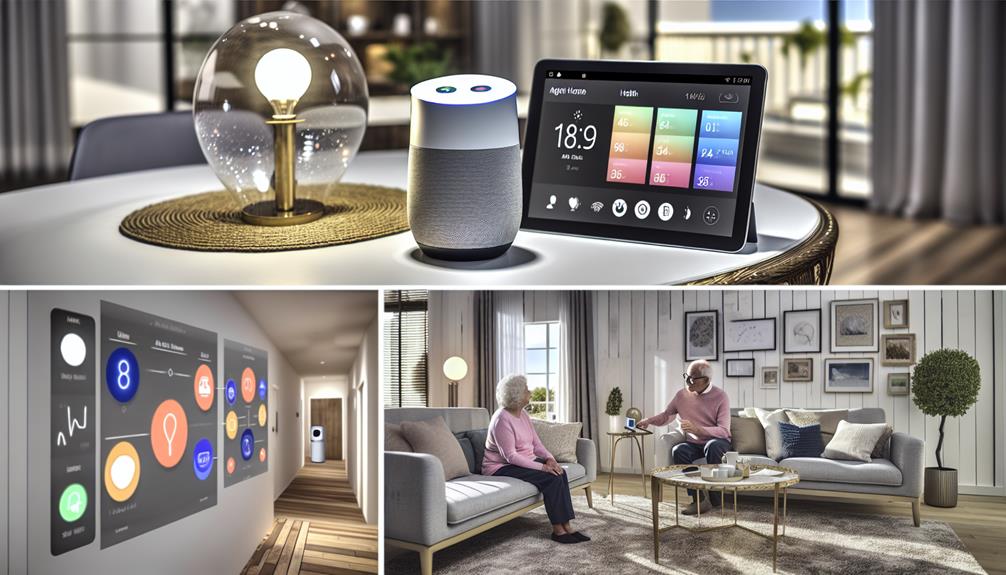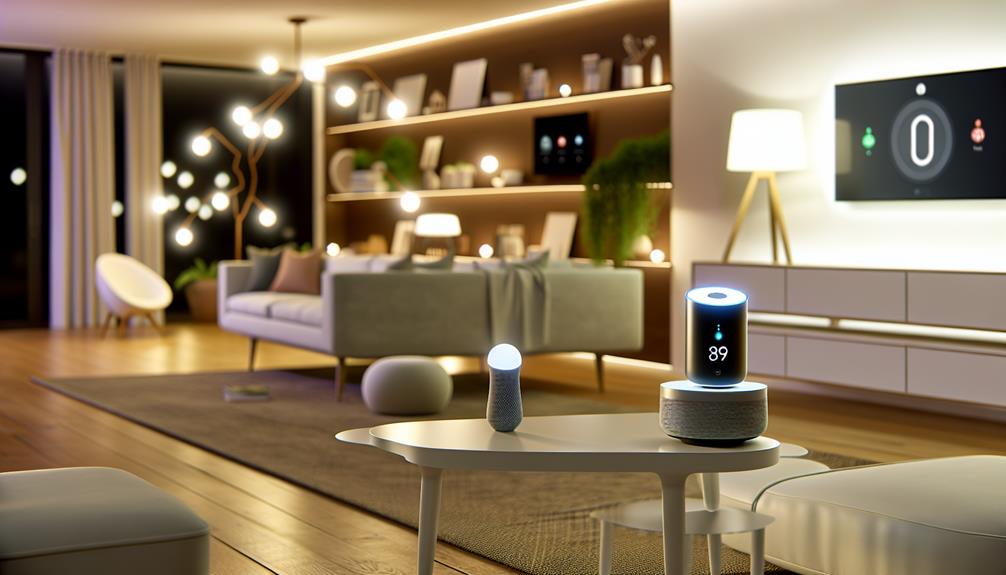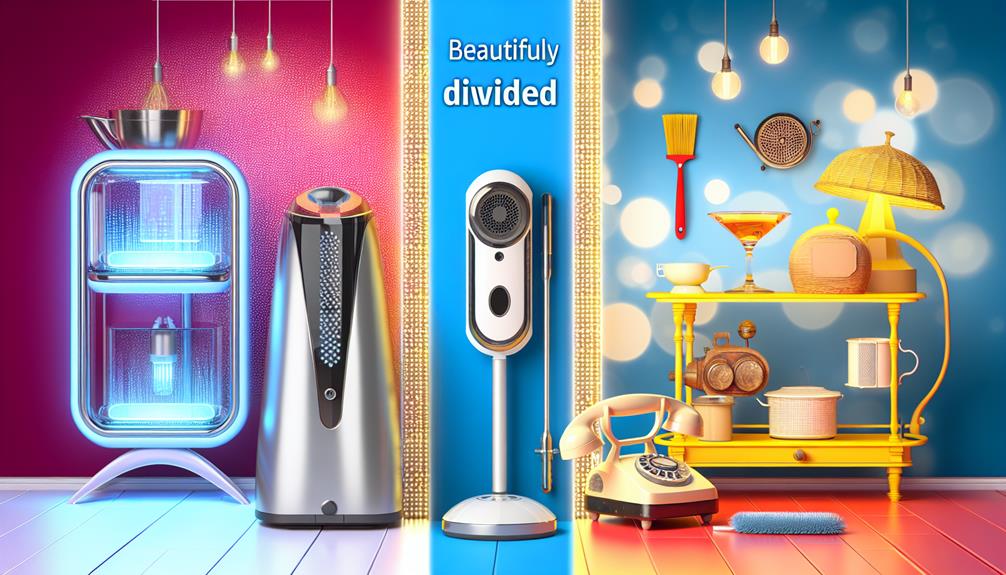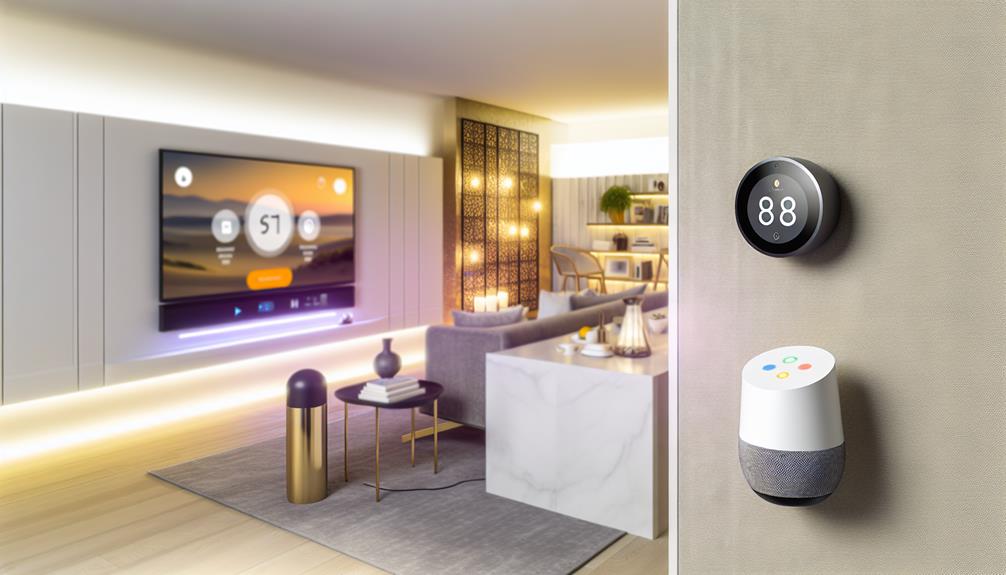What Smart Home Devices Aid Elderly Care?
The integration of smart home devices into elderly care presents a transformative approach to enhancing the quality of life for seniors. With advancements in technology, various tools such as health monitoring systems, automated lighting, and voice-activated assistants are designed to promote safety, independence, and social connectivity. These innovations not only facilitate daily activities but also provide critical support in emergency situations. As we explore the specific devices and their applications, it becomes evident that the potential benefits extend far beyond mere convenience, inviting a closer examination of their impact on elderly care.
Key takeaways
- Smart sensors monitor daily activities and detect unusual patterns, ensuring timely interventions for health and safety concerns.
- Fall detection systems alert caregivers immediately, enhancing safety for seniors living alone.
- Voice-activated assistants facilitate hands-free communication and provide quick access to emergency assistance.
- Medication reminder devices help seniors adhere to treatment regimens, promoting better health outcomes.
- Video calling solutions maintain connections with family, reducing feelings of loneliness and supporting emotional well-being.
Benefits of Smart Home Technology
The integration of smart home technology offers numerous benefits for elderly care, greatly enhancing both safety and independence. These advancements empower seniors to remain in their homes longer, fostering a sense of belonging and comfort.
Smart home devices, such as automated lighting and temperature controls, not only provide a more secure living environment but also promote energy efficiency. By optimizing energy consumption, these technologies help reduce unnecessary expenditures, leading to significant cost savings for families and caregivers.
Moreover, many smart home systems incorporate alert features that notify caregivers or family members in case of emergencies, further guaranteeing the well-being of seniors. This sense of security can alleviate anxiety, allowing older adults to engage in daily activities without fear of isolation or danger.
Research indicates that maintaining independence is essential for mental health, and smart home technology plays an important role in achieving this goal.
Ultimately, the benefits of smart home technology extend beyond mere convenience. They create a supportive ecosystem that fosters autonomy, nurtures relationships with loved ones, and enhances the quality of life for elderly individuals.
Key Ai-Driven Devices
Numerous AI-driven devices are revolutionizing elderly care by enhancing safety, communication, and daily living assistance. Among these innovations, smart sensors play a crucial role, allowing for real-time monitoring of an individual's daily activities. These sensors can detect unusual patterns, such as prolonged inactivity or missed medication, and alert caregivers or family members, fostering a sense of security for both the elderly and their loved ones.
Remote monitoring technology greatly complements these smart sensors by enabling caregivers to track health metrics and environmental conditions from a distance. For instance, smart home systems can monitor essential signs, detect falls, or assess the living environment, ensuring that elderly individuals receive timely interventions when needed.
This level of oversight not only promotes independence but also strengthens the bond between caregivers and seniors, creating a more supportive and connected community.
Safety and Security Solutions
Guaranteeing safety and security for elderly individuals living at home is paramount, and smart home technology plays a significant role in addressing these needs. Innovative solutions, such as smart sensors and cameras, offer peace of mind for both seniors and their families. These devices facilitate remote monitoring, allowing caregivers to keep a watchful eye on their loved ones from afar.
Fall detection systems are particularly vital in safeguarding the elderly. These devices utilize advanced algorithms and sensors to identify sudden movements or changes in posture that may indicate a fall. Upon detection, they can alert caregivers or emergency services immediately, guaranteeing timely assistance and reducing the potential risks associated with falls.
In addition to these technologies, smart door locks and alarm systems enhance home security, providing a layer of protection against intruders. These systems can be managed remotely, allowing family members to monitor access and guarantee their loved ones are safe at home.
Health Monitoring Tools
Health monitoring tools are revolutionizing the way elderly individuals manage their well-being at home. These innovative devices foster a sense of security and independence, allowing seniors to maintain their health without feeling isolated. By integrating technology into daily routines, elderly individuals can easily monitor essential signs, track physical activity, and receive timely notifications.
One of the key features of health monitoring tools is fall detection. This technology uses sensors to detect sudden movements or lack of movement, alerting caregivers or emergency services in case of an accident. Such systems greatly reduce the anxiety associated with falls, providing peace of mind for both seniors and their families.
Moreover, medication reminders play an important role in ensuring adherence to prescribed treatments. Smart devices can send alerts when it's time to take medications, reducing the risk of missed doses and potential health complications.
This not only promotes better health outcomes but also empowers seniors to take control of their medication schedules.
Automation for Daily Tasks
Increasingly, automation for daily tasks is transforming the lives of elderly individuals, enabling them to navigate their routines with greater ease and independence. Smart home technology, particularly smart lighting and automated reminders, plays an essential role in enhancing the quality of life for seniors.
Smart lighting systems allow users to control lighting via voice commands or mobile applications, reducing the risk of falls in poorly lit areas. This innovation fosters a sense of security, as elderly individuals can illuminate their homes effortlessly, creating a welcoming environment that minimizes anxiety associated with darkness.
Automated reminders are equally important, helping seniors manage medications, appointments, and daily activities. These reminders can be delivered through various devices, such as smartphones or smart speakers, ensuring individuals stay organized without feeling overwhelmed.
Research shows that consistent reminders contribute to better adherence to health regimens, fostering a sense of responsibility and care.
Enhancing Communication and Connectivity
Enhancing communication and connectivity is essential for improving the quality of life for elderly individuals, allowing them to maintain meaningful interactions with family and friends.
Voice-activated assistants provide easy access to information and facilitate hands-free communication, while video calling solutions bridge the gap between physical distance and emotional closeness.
Additionally, emergency alert systems guarantee that seniors can quickly reach out for help, promoting both safety and peace of mind.
Voice-Activated Assistants
Voice-activated assistants are transforming the way elderly individuals communicate and connect with their surroundings, providing them with a sense of independence and security.
These devices utilize advanced voice recognition technology, allowing users to interact effortlessly without the need for intricate manual controls. For seniors, this capability can greatly enhance daily living, making it easier to manage tasks and stay engaged with loved ones.
Key benefits of voice-activated assistants include:
- Hands-free operation: Seniors can make calls, send messages, or set reminders without needing to use their hands, reducing physical strain.
- Ease of access: The intuitive nature of voice commands helps those with limited technological experience navigate their smart home effortlessly.
- Emergency assistance: In critical situations, seniors can quickly summon help by simply speaking, ensuring they feel safe and secure.
- User privacy controls: Many devices prioritize user privacy, offering settings that allow individuals to manage data and voice recordings.
- Enriched social interaction: Voice-activated assistants can provide companionship through engaging conversations and reminders for social activities.
Video Calling Solutions
Video calling solutions are revolutionizing the way elderly individuals maintain relationships with family and friends, breaking down barriers of distance and isolation. As social connections are essential for emotional well-being, these technologies offer a lifeline, allowing seniors to engage with loved ones from the comfort of their homes.
Video conferencing platforms such as Zoom, Skype, and FaceTime have become crucial tools in promoting connectivity. These platforms are designed with user-friendly interfaces, making them accessible even for those who may not be technologically savvy.
Research shows that regular video calls can greatly reduce feelings of loneliness and depression among older adults, fostering a sense of belonging and community.
Moreover, many devices now come equipped with larger screens and simplified functionalities, further enhancing usability. By providing visual interaction, these solutions enable seniors to experience the warmth of presence, as they can see and hear their family members in real-time.
As the landscape of communication evolves, video calling solutions stand out as a beacon of hope, ensuring that the elderly remain connected to their social networks, enhancing their quality of life, and nurturing essential relationships.
Emergency Alert Systems
Maintaining strong communication channels is essential for elderly individuals, especially when it comes to their safety and well-being. Emergency Alert Systems (EAS) play a significant role in enhancing connectivity and providing peace of mind to both seniors and their families.
These systems guarantee that help is readily accessible, fostering a sense of security that is critical for maintaining independence.
Key features of Emergency Alert Systems include:
- Fall Detection: Automatically alerts caregivers or emergency services if a fall is detected, minimizing response time.
- Remote Monitoring: Allows family members to stay informed about the elderly individual's well-being from afar.
- Two-way Communication: Enables direct communication with emergency responders, guaranteeing voice contact during crises.
- Personal Emergency Response Buttons: Simple devices that can be activated to summon help with the push of a button.
- Geolocation Services: Helps locate seniors in case of wandering or emergencies, enhancing safety.
Frequently Asked Questions
How Do Smart Home Devices Help Caregivers Manage Elderly Care Remotely?
In an era reminiscent of seamless connectivity, smart home devices empower caregiver support through remote monitoring, enabling timely interventions and fostering a sense of belonging for both caregivers and elderly individuals, enhancing their overall well-being and safety.
Can Smart Home Technology Be Customized for Individual Elderly Needs?
Yes, smart home technology can be customized to meet individual elderly needs through personalized automation and adaptive interfaces, enhancing user experience while promoting independence and comfort, thereby fostering a sense of belonging and security for seniors.
What Is the Cost Range for Implementing Smart Home Devices?
The average initial investment for smart home devices ranges from $1,500 to $5,000, with ongoing expenses for maintenance and services typically averaging 10-20% of the initial cost annually, enabling enhanced comfort and safety for users.
Are There Privacy Concerns With Using Smart Home Technology for Elderly Care?
Privacy concerns surrounding smart home technology primarily revolve around data security and user consent. Ensuring that personal information is adequately protected and that users are informed about data usage fosters trust and enhances the overall care experience.
How Do Families Stay Informed About an Elderly Person's Well-Being via Smart Devices?
Families stay informed about their elderly relatives' well-being through remote monitoring systems and timely health alerts, fostering connection, ensuring safety, and providing peace of mind. These tools empower families to maintain involvement in their loved ones' lives.



